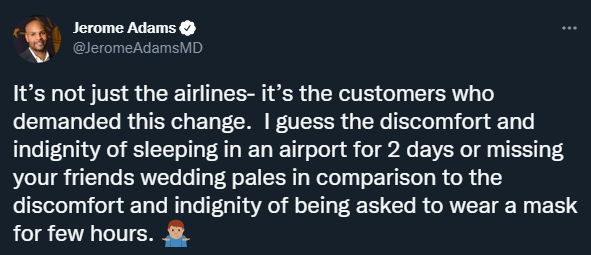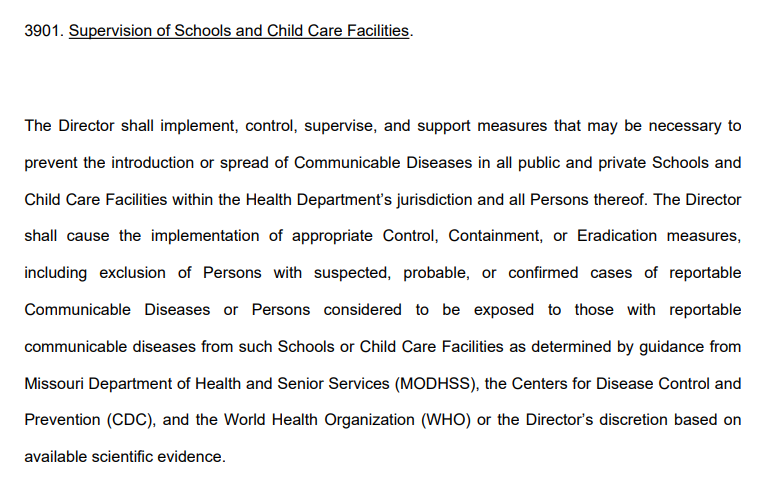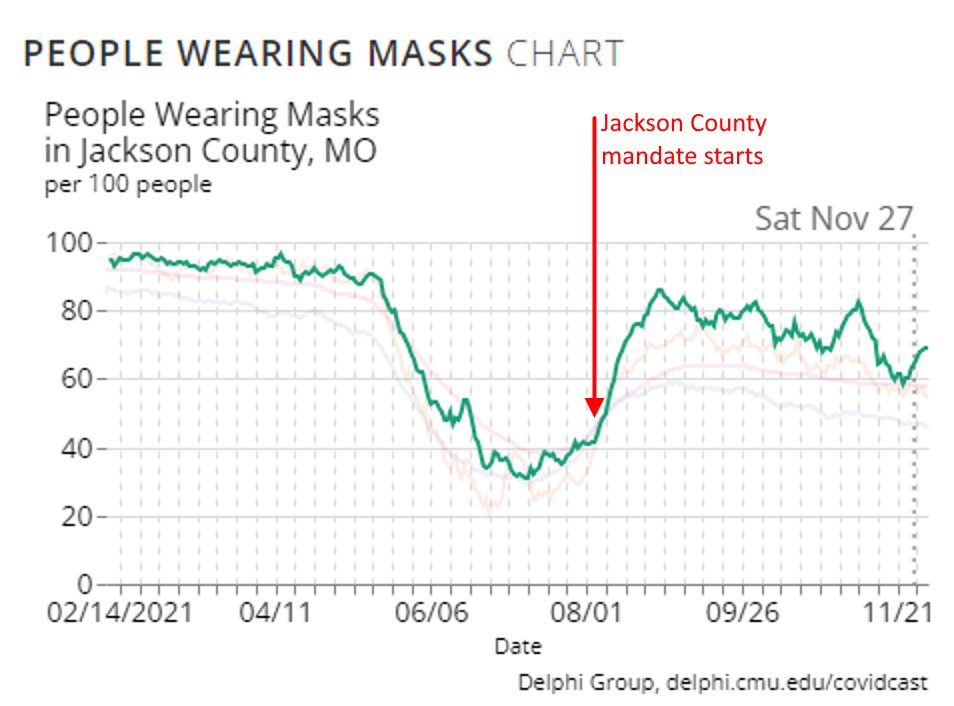1/ With the pandemic finally, thankfully winding down in the US, I thought I'd compare the COVID death curves of high, intermediate and low-stringency states. Despite a large surge in Spring 2020, the high-stringency states still saw a similar surge this past winter. 

2/ Looking at COVID deaths cumulatively, high, intermediate and low-stringency states performed about the same. It may be tempting to say low-stringency states performed "better", but it's more honest to say there's really no statistical difference between the three. 
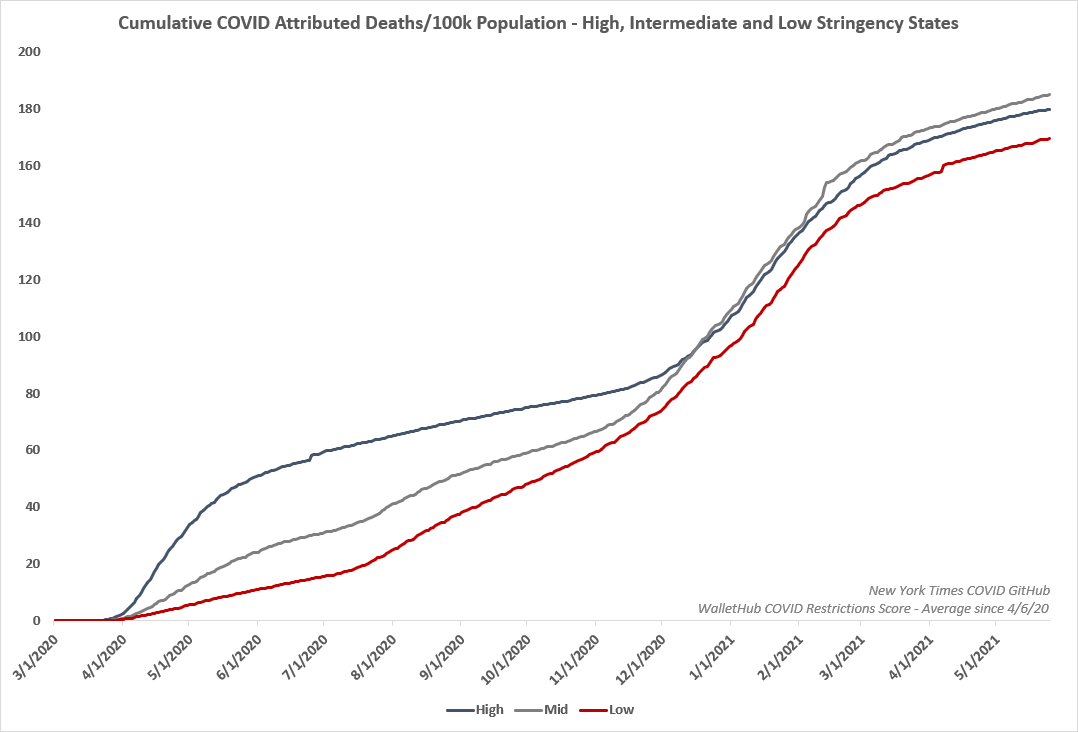
3/ And, if you like your charts very busy, here is a graph with both daily and cumulative COVID deaths per 100k, plus a map displaying what category each state falls in based on WalletHub's methodology. 

4/ It's obvious over the past 15 months that the COVID pandemic response has been extremely political. When you organize the high, intermediate and low-stringency states by its governor's party, there is an obvious trend - D governors = strict policy, R governors = lax policy. 

5/ This is obviously a problem. Hopefully we can all agree political bias should not drive scientific consensus or policy - but one's opinions on nearly every COVID issue, whether it's masks, school closures, lockdowns etc. have mostly aligned with one's political party.
6/ Politics drove COVID policy - but did more stringent policies lead to improved outcomes? Plotting a state's average stringency vs. it's death rate, it's very obvious a) republican-led states were less stringent, and b) there is no relation between stringency and death rates. 
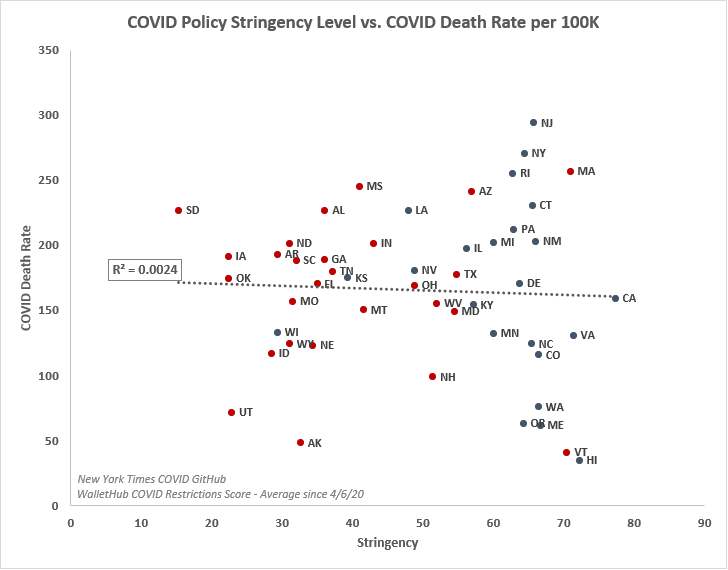
7/ A common narrative over the past year was "we need to lock down/tighten our COVID policies to help the economy recover faster" - yet there is a very clear correlation between more lax COVID policies and stronger economic recovery. 

8/ Policy didn't do much to affect the pandemic curve. So what actually did?
You can see the most stringent states' populations actually tend to be farther north (higher latitude), intermediate are in the middle, and less stringent states tended to be south (lower latitude)
You can see the most stringent states' populations actually tend to be farther north (higher latitude), intermediate are in the middle, and less stringent states tended to be south (lower latitude)

9/ Based on Hope-Simpson seasonality one can assume that the farther north you are, the more you will align with the "North Temperate" pandemic curve. Here is the Hope-Simpson N. Temperate curve compared to the strict (high latitude) COVID death curve (h/t @Hold2LLC) 

10/ The intermediate states were the most "in-between" north temperate and north tropical, so here is their death curve compared to the Hope-Simpson combined N. Temperate/N. Tropical seasonal curve. 

11/ And finally, the low-stringency states (mostly Southern and Sun Belt states) had the lowest average latitude. You can see they saw increased activity in the summer with a peak in winter - similar to what Hope-Simpson observed years ago. 

12/ While you can see a pattern based on stringencies organized by latitude, you get a much clearer pattern when organizing strictly by region. Here are population-adjusted COVID hospitalizations in the Midwest (with average highlighted). 

16/ So COVID policy didn't affect pandemic trajectory, but seasonal/regional factors did. Yet for some reason scientific elites continue to perpetuate the lie that lockdowns etc. drive down infections - despite continually mounting evidence to the contrary
https://twitter.com/the_brumby/status/1349478824606502912?s=20
17/ A lot of this probably comes from the human tendency to want to think we are in control, when in reality we aren't. And, unfortunately, this human vanity project came with catastrophic cost, and virtually no benefit. telegraph.co.uk/news/2021/05/3…
18/ And therein lies a big problem - the same people who pushed for lockdowns, school closures etc. over the past year are now professionally incentivized to downplay the harms of the policies they advocated for while exaggerating their efficacy. They need to be held accountable.
19/ This is why the work of organizations like @collateralglbl is so important - tracking the devastation from these policies, whether it's exacerbating hunger, delaying preventative treatments, worsening mental health, etc. - we need to make sure lockdowns are never used again.
• • •
Missing some Tweet in this thread? You can try to
force a refresh








